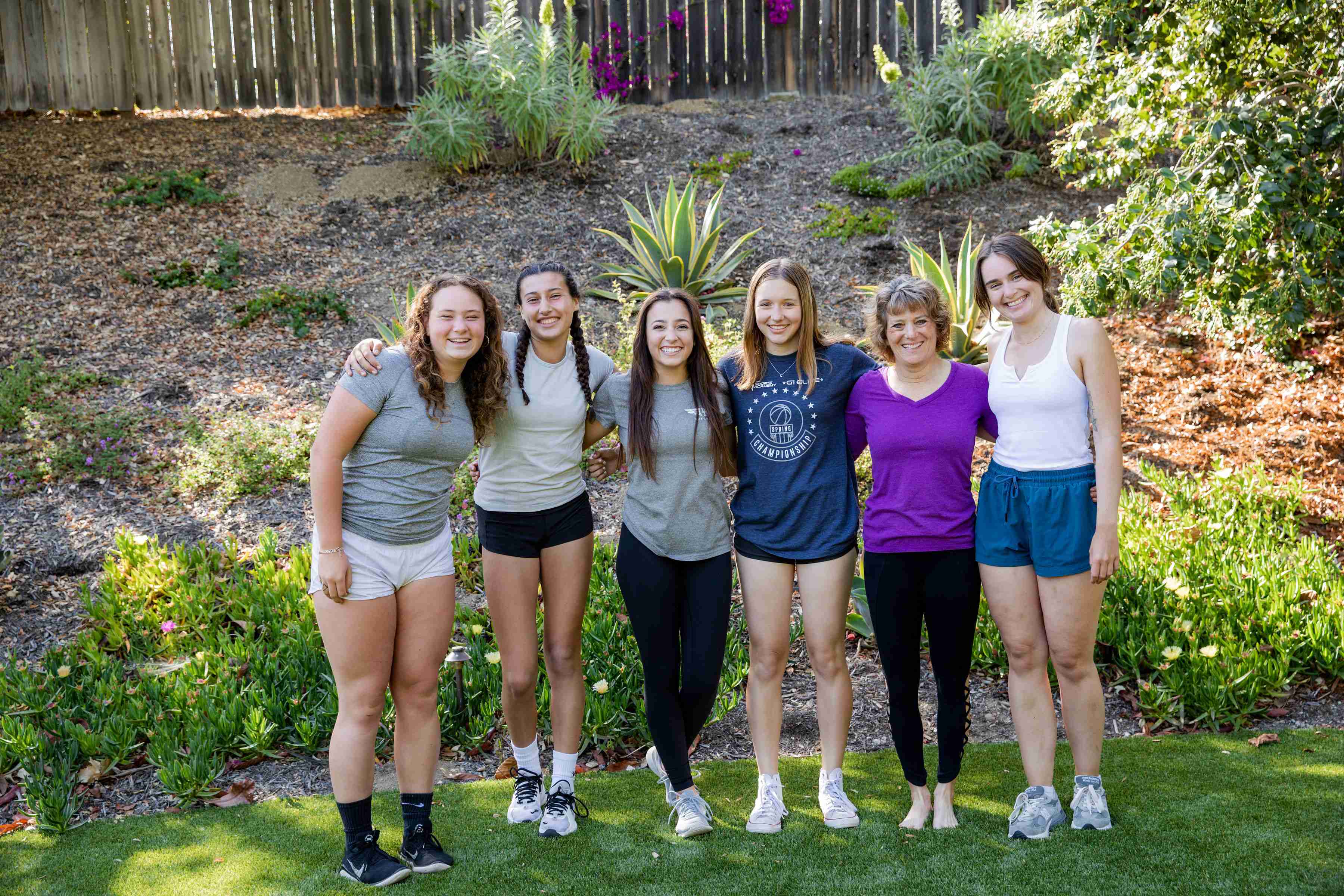Last week I was completing a 10 week Still Quiet Pace course with 30 teachers from a local high school. The principal is committed to bringing mindfulness to the entire school population in a meaningful and sustainable way. Thus, we began with the course for teachers. The intentions for this course were to provide the teachers with skills to respond to the day-to-day challenges that teachers face, to enhance their health and well-being, and secondarily to begin to prepare them for sharing mindfulness with their students. During the closing class for this course we discussed the next phase of the program, and I mentioned that the teachers wishing to share mindfulness with students would be expected, encourage and supported to develop a committed personal practice- 30 minutes a day 6/7 days per week.
I noted that this is really no different than any other discipline offered by the school. The school would not hire a math teacher who does not have a thorough understanding of math, or perhaps more analogous, as my dear colleague Chris Willard says, a swimming coach who is not able to swim, teach swimming, and able to swim well enough that they can jump in and bring someone who is struggling to safety.
If you have not walked through your own tender territory you will not be able to guide others through theirs.
In an after class discussion, another useful analogy (especially for my English teacher friends) arose. Walking to the parking lot a teacher asked “for the next series can we do two 15 minute practices or does it need to be a consecutive 30 minutes?” And I responded
The distinction, between sitting for 15 minutes and sitting for 30 minutes is like the distinction between writing a basic 5 paragraph essay, and writing a 10-page paper. The 10-page paper asks something different of us. It asks us to go deeper, to really reflect, to make meaningful connections, to move from the general to the specific, to support and develop our thesis….
After this dialogue I posted my thoughts on Facebook, and received this thoughtful inquiry.
The reason of this point is undeniable, Amy Saltzman. I’m curious, though, what your thoughts are on measuring deep personal practice, or even just “knowing it when you see it.” Because unlike the analogies we always make (sports, talents, academic content areas), mindfulness is of course internal. Even as a researcher, I understand well that not everything important can be measured. I don’t need a randomized trial to tell me that love is important, and I personally feel that mindfulness is a similar kind of thing. Yet, so many of us are indeed trying to bring this personal thing into the public square and thus have to be thinking about how to convey when a bar we are adamant on setting has been reached. So, years of experience? Trait mindfulness surveys? Self-reported frequency of practice? A verbally stated commitment? Would love your thoughts.
Below is my initial response
Back in the day, (the early 90’s to be exact), when the Kaiser hospital system began to offer “mindfulness” throughout the region, several of us in the Northern California Mindfulness community wrestled with this question. For over a year, we met in my living room and explored this issue. Jon Kabat-Zinn and Saki Santorelli participated in many of these conversations.
The result of those conversations was a document titled Recommended Guidelines: Qualifications for Teachers of Mindfulness-Based Stress Reduction and Chronic Pain Programs. A more detailed summary of this discussion and outcomes can be found in my first book, A Still Quiet Place: A Mindfulness Program for Teaching Children and Adolescents to Ease Stress and Difficult Emotions
While we can’t ever know about another’s practice, or perhaps even our own, we can convey to decision makers, and program developers the qualities and qualifications necessary to do this work with authenticity and integrity. Let me know if you would like to explore this further.
She did want to explore it further, so this blog post is my response. Before I share the chapter from my book let me say that several years back I was speaking at a conference in Australia with my dear friend and colleague Mark Greenberg; Mark is a pioneer, working at the intersection of Mindfulness and SEL (see Mindfulness For Youth: The Emerging of A Unified Field)
At the meeting Mark said “teachers won’t practice for 30 minutes a day” I disagreed. I felt, and still feel, this is selling teachers short. Most teachers are suffering from the day-to-day demands of the profession. Once they get a taste of practice and personally experience the real and meaningful benefits they are more than willing to devote time to enhancing their own well-being, and to developing skills to support their students. Most teachers I know are committed to serving their students with excellence. And most teachers are human, which means if we, those of us who are setting the standards, say that the expectation is 5 minutes of practice a day, they will practice 5 minutes or less per day.
So, especially as mindfulness in schools becomes more popular, it is our responsibility to set a professional standard. It is also imperative to remember that in the great majority of research studies showing benefits for offering mindfulness to K-12 students the interventions have been offered by instructors who have deep personal practice. Just as we cannot expect the same benefits from a different dose of medication, or a different medication entirely when treating an illness, we cannot expect the same benefits from a different dose of mindfulness, or something other than mindfulness when offering interventions to youth. And, at the risk of overstating, perhaps more analogous…. while a surgical resident can perform a routine appendectomy, we want an experienced surgeon when there are complications. As we in the field become increasingly trauma informed, we are realizing the risk for complications (across the board in all settings) is higher than originally thought; this point cannot be overemphasized.
I will close now with the excerpt from my book A Still Quiet Place: A Mindfulness Program for Teaching Children and Adolescents to Ease Stress and Difficult Emotions, regarding the qualities and qualifications for offering mindfulness to youth.
Am I Ready? Qualities and Qualifications for Visiting the Still Quiet Place with Children
As you have experienced, during the course we revisit many themes with our young friends, deepening and expanding upon them over time. In this section we will revisit the recommendations regarding developing a personal practice, and the practice of facilitating detailed in chapter 3. Now that you have a clearer sense of the course, it is essential that you bring your kind and curious attention to the question “Am I ready to share the Still Quiet Place with children and adolescents?” This chapter provides historical context and draws on the collective wisdom of pioneers in the Northern California MBSR community to express the qualities and qualifications for doing this work.
Although the heartfelt, rigorous dialogue describe below took place almost 20 years ago, it is immediately relevant in the here and now. Developmentally the field of mindfulness for youth is currently where the field of mindfulness in medicine was when the conversation below took place. There is tremendous interest and “buzz,” creating both amazing opportunities and potential risks. More importantly, in this moment, the inquiry below is intimate and deeply personal: Are you ready? Following the inquiry, I describe the stages of my own journey through this inquiry and into teaching and teaching to youth.
Throughout the mid-1990s, a small group of MBSR teachers in Northern California (we eventually became known as the Northern California Advisory Group on Mindfulness in Medicine) met once a month to support each other, and to discuss the joys and challenges of teaching and facilitating mindfulness. Around this time, the Northern California Kaiser Hospital system decided to offer MBSR on a regional basis through its health education departments. Kaiser’s model for health education was to give a trained health educator a standardized curriculum on a particular topic (smoking cessation, weight loss, MBSR) and have the health educator provide the curriculum more or less verbatim.
During this time, our group learned of several instances in which professionals with no mindfulness experience were hired to teach MBSR at various facilities throughout the region. One woman hired to teach wisely realized that mindfulness was distinct from the other health education curricula, and that she needed personal experience if she was to deliver MBSR authentically and effectively. To her credit, she approached one of the advisory group members for support. This woman’s experience, among others, prompted the group to consider how we could support the administrators responsible for hiring the instructors, and the instructors themselves. Our aim was to ensure that MBSR was offered in the Kaiser system and beyond, with the same exemplary degree of integrity and resultant high level of efficacy as at the Stress Reduction Clinic, at the University of Massachusetts.
Qualities and Qualifications
Our collective experience yielded a simple clarity and certainty: a teacher or facilitator must have an “established practice” and teach from her experience. Translating what this actually meant for ourselves, hospital administrators, and potential instructors turned out to be a mindfulness exercise in and of itself. Together, we spent almost a year discussing and refining the qualities and qualifications for MBSR instructors, and in 1996 we ultimately produced a document titled Recommended Guidelines: Qualifications for Teachers of Mindfulness-Based Stress Reduction and Chronic Pain Programs. The document itself is succinct and eloquently worded. It has tremendous power, in that it was written by a respected community of pioneers in the field of mindfulness in medicine, the majority of whom continue to be leaders in the field.
As with other elements in this book, I have retained the essence, clarity, and intention of the document. Simultaneously, I have included limited adaptations to speak to professionals working and playing with children and adolescents. The chosen modifications appear in italics. Given the vulnerability of young people, respecting the intention of these guidelines is perhaps even more important when teaching youth than when teaching adults.
Recommended Guidelines: Qualifications for Teachers of Mindfulness-Based Stress Reduction Youth Programs
More schools and community settings are developing mindfulness programs for children and adolescents. Based on our experience, those of us who are directing and teaching existing programs resolutely endorse the specific guidelines which appear below. These guidelines are offered in the spirit of filling a need, and maintaining the integrity of the work. These guidelines are not meant to be absolute, but rather to bring clarity to the process of (training and) hiring mindfulness instructors.
The primary role of an instructor of mindfulness practice is to offer an approach to developing social, emotional, and academic competencies, and working with stress and suffering. This is delicate work, and it therefore necessitates that instructors have a level of preparation that differs from and generally exceeds that of most other approaches to stress reduction.
This document describes both qualifications for and qualities of a mindfulness instructor. These guidelines represent the minimum qualifications and the ideal qualities. We wish to make explicit that the qualities are of primary importance. We are aware that there are individuals who meet the qualifications with regard to consistency, duration, and intensity of mindfulness experience but who are not capable of teaching; and there are rare individuals who do not meet the specific qualifications yet have developed the qualities of a teacher and are capable of teaching.
Qualities
o An ability to create a safe environment where participants are able to explore their physical, mental, and emotional territory.
o A profound ability to empathize with, and simultaneously maintain a nonjudgmental perspective of, a participant’s experience.
o A willingness to accept and engage with any participant’s experience of physical sensation, emotion, or thought.
o Honesty about, and respect and compassion for, what it means to be human.
o A quality of unshockability.
o The discernment to make appropriate (useful) comments and suggestions to individual participants.
o An ongoing awareness of the evolutionary process of each individual and the group as a whole.
o A commitment to apply the principles of mindfulness to situations in daily life that the instructor herself finds personally challenging.
o The ability to model (embody) and convey self-acceptance and other principles of mindfulness.
o The (consistent) ability to inspire and maintain participant interest and adherence.
o A love of, and willingness to connect with, youth.
Qualifications
o A daily mindfulness practice.
o Five years of mindfulness experience.*
o Extensive mindfulness retreat experience (multiple five- to ten-day, or longer, retreats recommended). This develops the instructor’s essential experiential knowledge of the varied mind states that can arise during the process of mindfulness practice.*
o An ability to translate mindfulness into ordinary, everyday language.
o Extensive experience teaching yoga or some other movement practice within the context of mindfulness. The essential elements of this context include nonstriving and honoring individual experience. The attention must be on the process itself and not on the results. This allows individuals to simultaneously investigate their limitations, and to gently challenge them.
o Professional experience (teaching credential or equivalent) working with youth.
o Process-oriented group facilitation skills.
o An ongoing affiliation with a community of mindfulness peers (teachers and practitioners) who encourage continued professional growth and development.
“Oh, Shit!” Moments
Perhaps as you read the guidelines you experienced what I fondly refer to as an “Oh, shit!” moment. Although the timing varies, “Oh, shit!” moments arise for almost all people committed to doing this work with integrity. When it arrives it sounds something like this: “Can I really do this work? Can I do it with skill, grace, vulnerability, devotion, and fearlessness? Am I equal to the responsibility and privilege of teaching?” Congratulations. This is a sign that you are committed to doing this work with authenticity. Keep breathing and trust that you will find your way.
The process of creating the Qualities and Qualifications was intense and provided me, and many of my colleagues, with our own “Oh, shit!” moments. My moments had to do with acknowledging that, although I was already teaching, I could not check two crucial boxes in the qualifications list—items 2 and 3: five years of mindfulness experience, and extensive mindfulness retreat experience. However, thanks to the rigorous life coaching I was participating in, the qualities had blossomed. So I continued to teach. And in my commitment to doing the work with integrity I continued my daily practice, and promptly participated in a guided silent retreat. Since then, for the last twenty-eight years I have maintained an “almost” daily practice, and sat at least one annual silent retreat.
I offer these reflections in the hopes that they will provide you with your own “oh Shit!” moment, and inspire you to deepen your practice for your own benefit, and the benefit of those you serve.
*Note: given the realities of the field I would now adapt the above as follows. The absolute bare minimum regarding personal practice is an 8-week MBSR course or equivalent, and an ongoing commitment to 30 minutes of formal practice 6/7 days per week. So kindly, gently ask yourself do you want to do the bare minimum?
And if you already teaching, and do not yet have this level of experience, I encourage to simply start where you are. Bring your kind and curious attention to your intentions, to your resistance, to your next sane and joyful steps. Perhaps you want to commit to a daily practice using the support of a free app like Insight Timer (which has all of my adult practices as well as thousands of practices from wise, compassionate teachers). Perhaps you want find a local or online MBSR course. Perhaps you want to participate in a course which will support you in deepening your own personal practice, and in bringing mindfulness to youth….
Anchor yourself deeply in your truest intentions for doing this work, and choose from your heart. If, as I suspect, you want to make a meaningful difference in the lives of your students, then begin by making an unshakeable commitment to your own practice.
P.S. As mindfulness grows in popularity this issue will be increasingly important. Just last night as I put the finishing touches on this blog my dear friend and colleague, J G Larochette of Mindful Life Project and keynote speaker for this year’s Bridging Hearts and Minds of Youth Conference posted this on Facebook.
Integrity. I turned down a large contract for a school that wanted to be trained in 4 hours on bringing mindfulness to their classrooms. I mentioned that in order to teach mindfulness you have to know mindfulness and you definitely will need way more than 4 hours 😂 this ain’t a quick fix people. The practice needs respect and to be spread with integrity.
To summarize: The benefits our students experience, depend on the quality of our practice.
If you would like support or guidance please feel free to contact me by phone or email.




